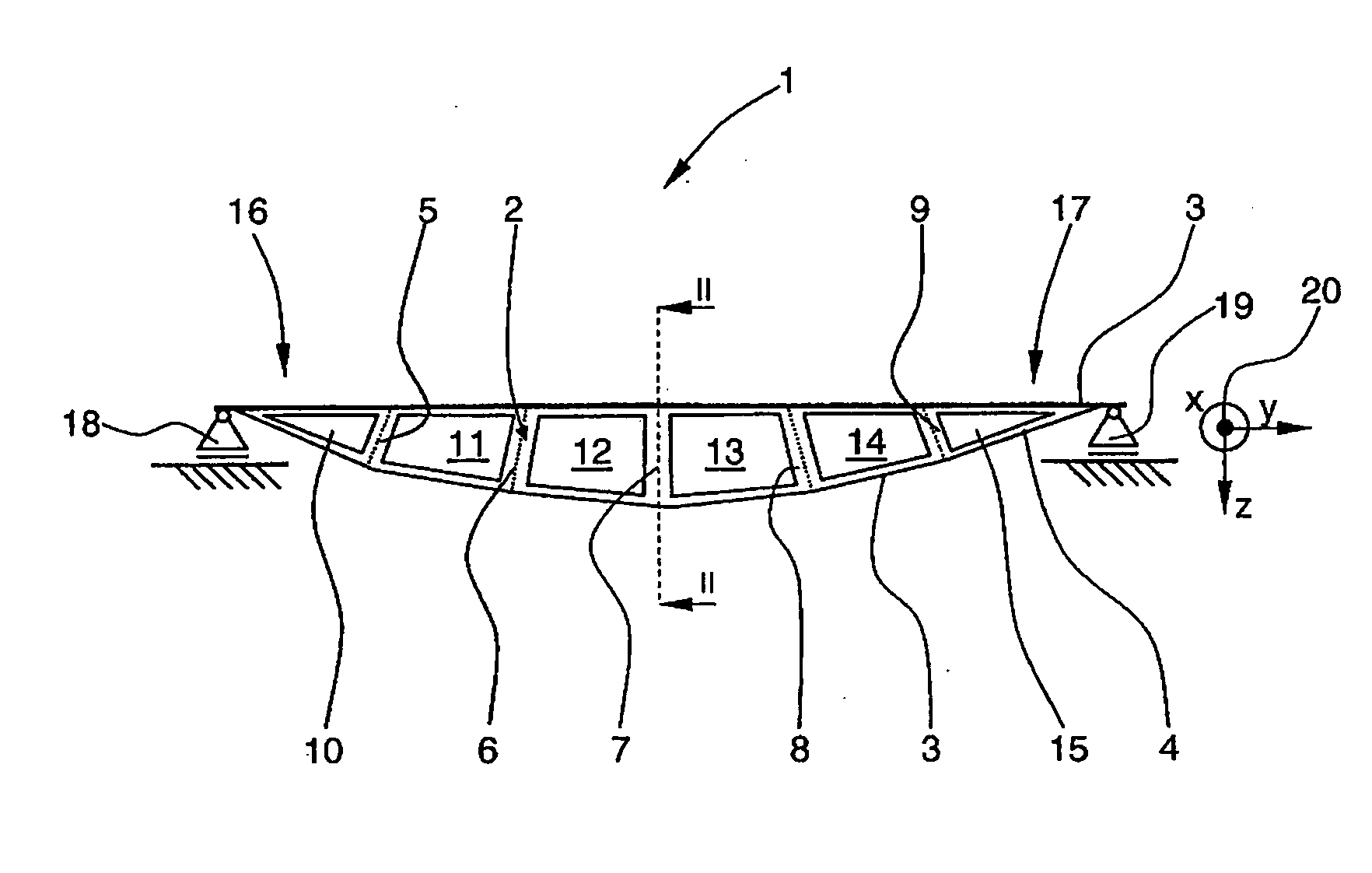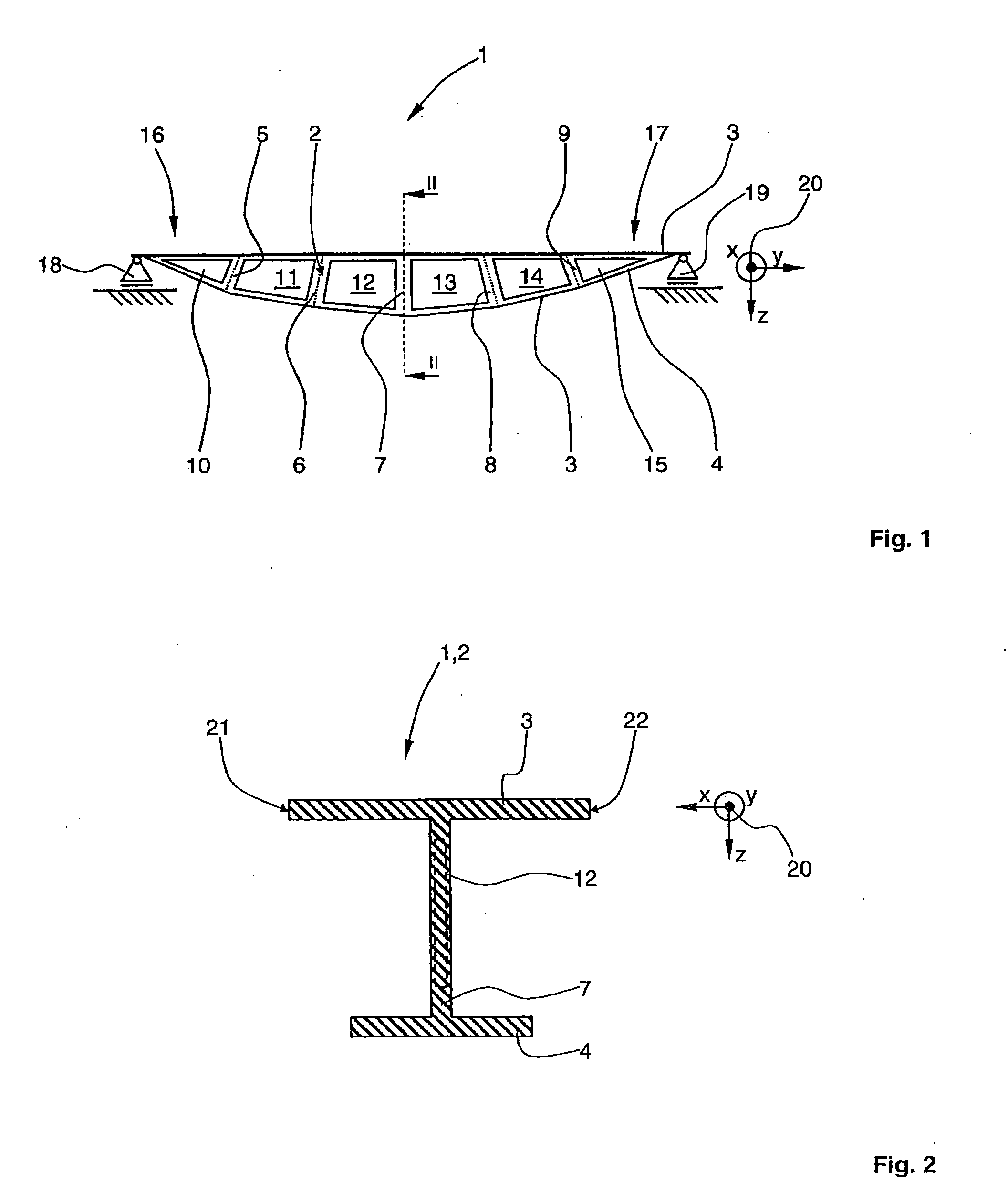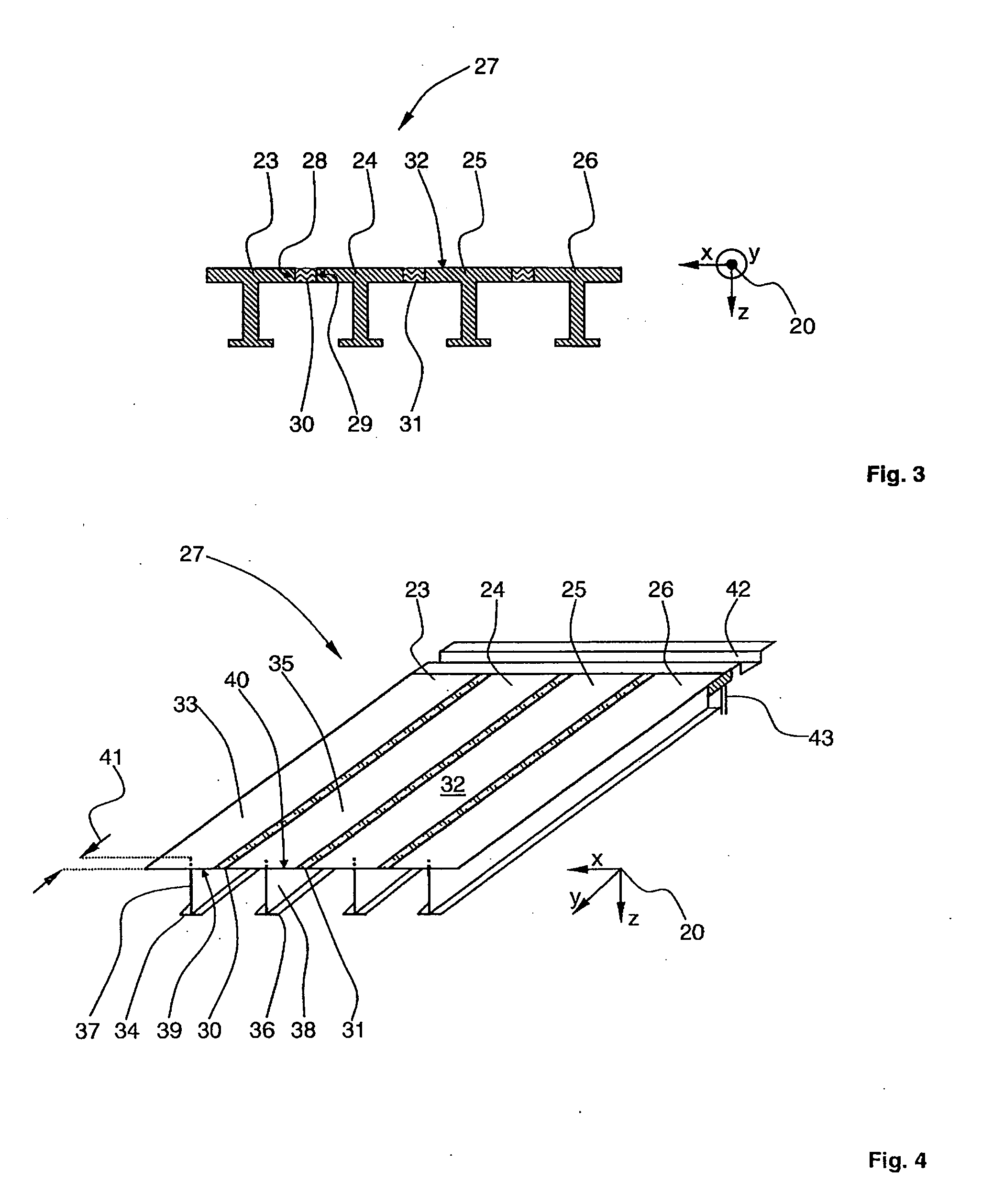Floor panel for forming a loading area in a cargo hold of an aircraft
- Summary
- Abstract
- Description
- Claims
- Application Information
AI Technical Summary
Benefits of technology
Problems solved by technology
Method used
Image
Examples
Embodiment Construction
[0024]FIG. 1 shows a side view of a milled profile for forming the floor panel according to the invention.
[0025]A milled profile 2, formed as a beam 1, for forming the floor panel according to the invention by arranging a plurality of such milled profiles one against the other along their longitudinal edges, comprises an upper flange 3 and a lower flange 4. The upper flange 3 has a straight geometry, whereas the lower flange 4 extends in an arcuate manner, at least in certain portions. Arranged between the upper flange 3 and the lower flange 4 are a plurality of webs 5 to 9, to achieve a defined spacing between the upper flange 3 and the lower flange 4 along their extent. Between the webs 5 to 9 there are six compartments 10 to 15. The compartments 10 to 15 are regions of the beam 1 that have been milled out completely from the beam 1 or just partially milled away, that is to say reduced in their material thickness.
[0026]The overall geometrical arrangement of the milled profile 2 mi...
PUM
 Login to View More
Login to View More Abstract
Description
Claims
Application Information
 Login to View More
Login to View More - R&D
- Intellectual Property
- Life Sciences
- Materials
- Tech Scout
- Unparalleled Data Quality
- Higher Quality Content
- 60% Fewer Hallucinations
Browse by: Latest US Patents, China's latest patents, Technical Efficacy Thesaurus, Application Domain, Technology Topic, Popular Technical Reports.
© 2025 PatSnap. All rights reserved.Legal|Privacy policy|Modern Slavery Act Transparency Statement|Sitemap|About US| Contact US: help@patsnap.com



